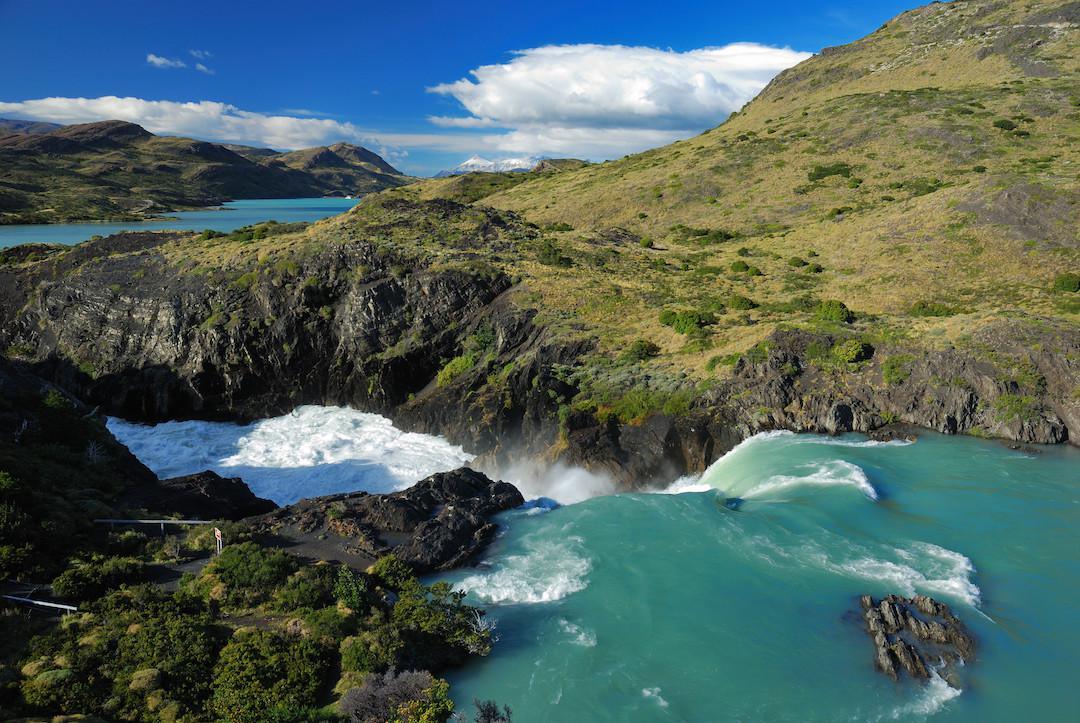Encounter Torres del Paine Patagonia, Chile
Authentic South American Experiences For Your Clients Request A Quote
Along nearly 230,000 hectares, find petrified forests, massive, inhospitable tundra, ice fields, glacial rivers, lakes, wetland, glaciers, and mountains.
Most park visitors prefer the W track, whose name comes from the zig-zagging route, which crosses through the reservation’s key locations and destinations. More experienced hikers might want to try the problematic O Circuit, which is more and more intimidating, but crowds are less here, and often you will be alone in nature in a peaceful environment. Only consult our travel experts, and we will tell you which one suits your destination best.
Alternatively, you can take a shorter day trip to the park, and we can give you additional details. Torres del Paine’s town draws walkers and climbers from all over the world to finish the many trails and treks in the National Park, and its charm is that even the beginner climber can conquer it. Here you’ll find something for biking, walking, and trekking on all levels, ages, and health, as the routes wind through acres of wild grasslands and meadows extending into turquoise lakes, backed by a horizon of ancient volcanoes. Eerie gnarled trees line the paths and are crossed by humpback rivers with pure mountain waters that can fill your glass with them. Touch Paine, the shaky silhouette of the Cuernos or the Horns, enjoy a warm meal and a glass of wine in the well-designed lodges at the end of a long day.

biking, walking, and trekking on all levels, ages, and health

Welcome to Patagonia’s majestic, jaw-dropping, and undoubtedly one of Chile’s most special places. The area is renowned for its steep climbing peaks, wild landscape, rich natural beauty, flora, and fauna, and none other than the famous national Torres del Paine Park in Southern Chile represents Patagonia’s magic. Located at a stone’s throw from the Argentinean border and sitting amid the Andes’ legendary mountain range, the park is positioned at the bottom of the territory sliver. It is popular because of its unparalleled walking and houses some of the world’s best walks. Patagonia’s real gem, this enormous park, has numerous granite towers and massifs that, as the clouds go, make visitors feel insignificant compared to the natural spectacle which they suddenly encounter.
build your clients trip with our experts


What not to miss in Torres del Paine
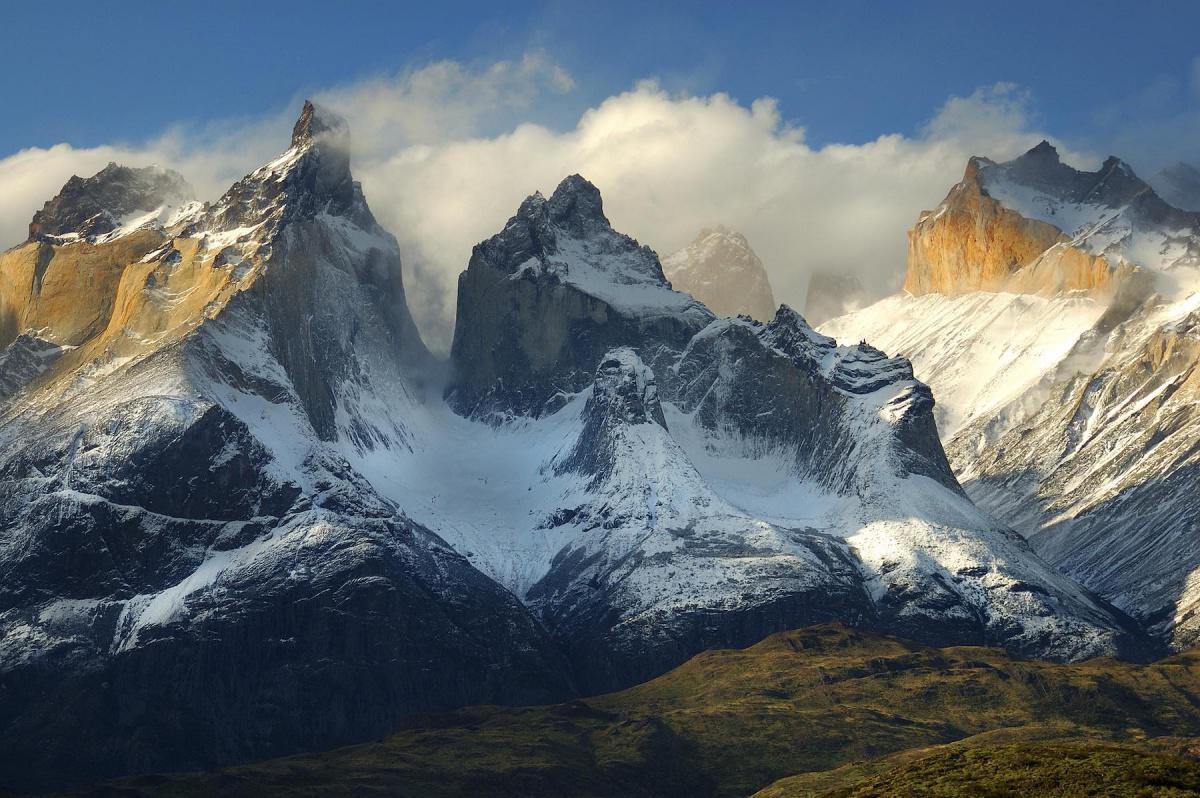
Torres del Paine National Park
Chilean Patagonia is home to some of South America’s most stunning national parkland – the Torres del Paine National Park. Acres of wild grasslands spread out in every direction and towering above the steppe are some of the most dramatic mountain peaks you are ever likely to see. The Torres del Paine (the towers of Paine) dominate the landscape, shooting up around 2800m from the plains. These are ancient volcanoes, and their dark, craggy granite pillars were formed when the softer rock around their edges was worn away to reveal the hard granite rock in the central neck of the volcano cone.

Puerto Natales
Puerto Natales was founded in 1911 and has around 20.000 inhabitants. The town has a real patagonian cowboy feel about itself. Natales is the gateway to the Torres del paine national park and many travellers stay here opposed to the more expensive accommodation within the park it self.
The town has some good restaurants and also offers alternative excursions besides visiting Torres del Paine. Like taking a cruise to visit the glaciers.
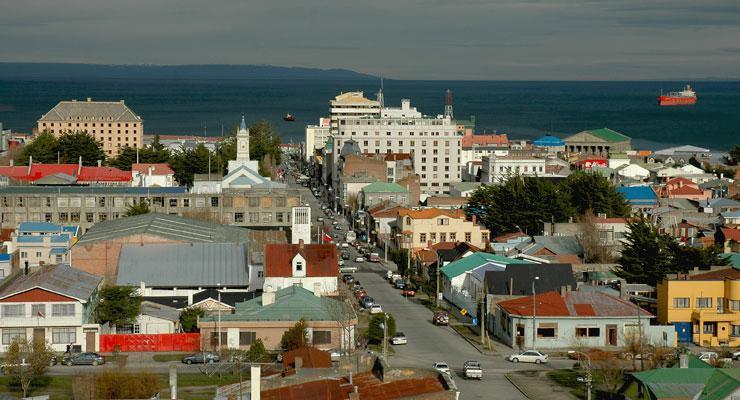
Punta Arenas
Founded in 1848, Punta Arenas is one of the most southerly cities in the world. It lies just over three thousand kilometers from the Chilean Capital Santiago, and is the capital of the Region de Magallenes y la Antarctica Chilena.
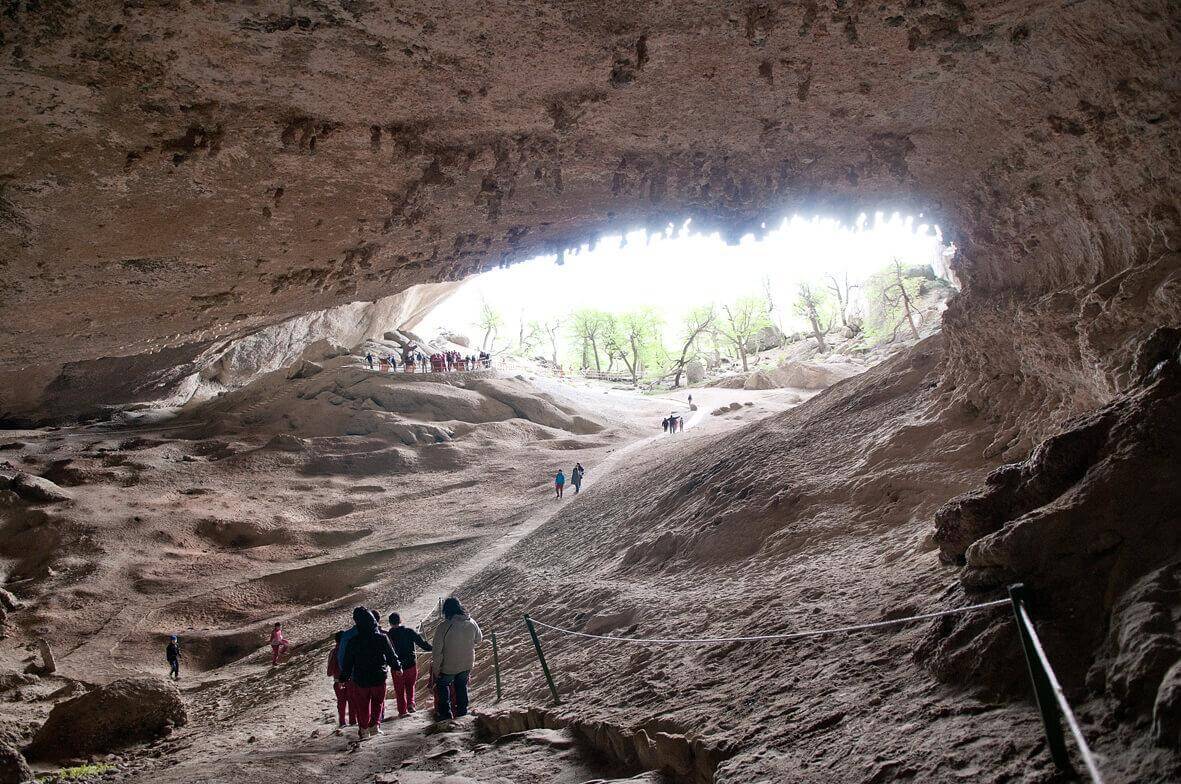
Milodon Cave
The Milodon cave is a fairly large cave that is usually visited on the way to Torres del Paine, on the way back.
The cave was discovered in 1895 by a German explorer called Hermann Eberhard. He found also a large piece of skin in the cave, that was later identified as the skin of the Mylodon – an extinct animal which died 10,200–13,560 years ago.

Glacier Cruises
Balmaceda and Serrano glaciers are located inside the National Park Bernardo O’Higgins, which is 31 miles North West to Puerto Natales and is part of the Andes mountain range. To visit it, means to admire a majestic place, barely touched by mankind. Its access is only maritime, sailing through Última Esperanza inlet, named after the ‘last hope’ of finding the Strait of Magellan in 1557, for an expedition looking for it from the Pacific Ocean.
Salto grande and the Cuernos of Paine
Torres del Paine National Park’s beauty is ever-present along this short hike where you will also be able to stop off at the Salto Grande Waterfall during the hike. The fairy-tale setting of the Salto Grande Waterfall is spell-binding, as the water drops 50 feet through a narrow chute from the blue waters of Lake Nordenskjöld into what eventually turns into Lago Pehoé. From the Salto Grande Waterfall the trail continues along the shore of the picture-perfect Nordenskjöld Lake until you arrive at the Horns Viewpoint. Here you’ll be able to appreciate a unique, up-close view of the impressive massif.
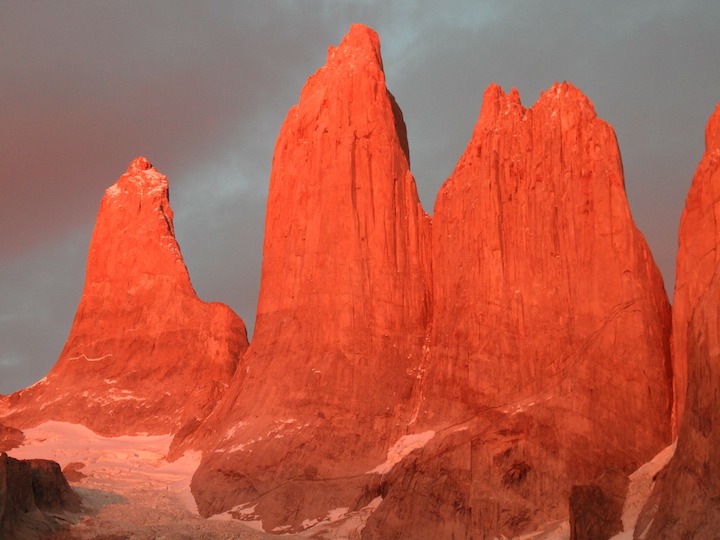
Hike to the base of the Torres
Although being one of the more challenging Torres del Paine day hikes, the route to the base of the Torres is certainly one of the most rewarding hikes in the Torres del Paine National Park.

Magdalena Island
A 30-minute boat ride away from Punta Arenas lies Isla Magdalena. The Magdalena and Marta islands form the National treasure “Los Punguinos”, which lies about 25 nautical miles from Punta Arenas. This wild, barren and wind-beaten area will make you feel a million miles from home. It is estimated that around 50,000 pairs of Magellan penguins live on Marta.

Grey Glacier
The Grey Glacier which covers an astounding area of 100 sq. miles is part of the Southern Patagonian Ice Field, one of the largest continental stretches of ice.
destination map

| Title | Address | Description |
|---|---|---|
Santiago de Chile | Santiago, Región Metropolitana, Chile | A city where old meets new in the architecture, culture, and geography of this Chilean metropolis. In Chile’s central valley of the Santiago Basin, the city is surrounded by many formidable mountain ranges that dominate the horizon. The Andes, which are as far away from Santiago’s side as the Pacific Ocean is from the other, are among them. Read more… |
Chilean Patagonia | Patagonia | Patagonia is a vast region of Argentina & Chile, and the southernmost tip of South America. Chilean Patagonia, which draws tourists for its thrilling outdoor sports and seasonal wildlife spotting. In Chilean Patagonia, the Andes sink drastically into the Pacific, producing unique geographical formations and an extensive array of archipelagos, channels, and fjörds. Read more… |
San Pedro de Atacama | San Pedro de Atacama, Antofagasta, Chile | In northern Chile’s high, arid plains, an otherworldly moon-like landscape meets with the night skies. With vast desert plains, volcanic peaks, gleaming white salt pans, undulating pink and orange rock and sand formations, and turquoise lagoons, Atacama Desert is a remote land that continues to captivate travelers, and home to a variety of wildlife, flora, and fauna. Read more… |
Lake District | Avenida Philippi 1215, Frutillar Bajo, Frutillar, Los Lagos, Chile | At the Andes’ base, this 600-mile long sliver of mountainous terrain boasts numerous lakes between the mountain range and sea running south. This region draws tourists who enjoy a slower, more relaxed pace of exploration, to explore the lakes and their surroundings individually, away from the crowds and tourist traps of southern Patagonia, to give you that desired feeling of pure solitude in nature. Read more… |
Easter Island | Isla de Pascua, Valparaíso, Chile | This Pacific Island, located an astounding 2,200 m away from the South American coast, technically belongs to Chile. Famous for its giant Moai statues, iconic and mysterious stone heads have made the island popular throughout the world as remote, isolated, and enigmatic. The Moai were sculpted more than 400 decades ago by the indigenous Rapa Nui, the indigenous people inhabiting the island. Read more… |
Depending on your client’s preferences, we can help you determine the best experiences tailored for your clients. From where to visit, when to go, what to do and how to get there safely, our travel experts will help you create an experience your clients will love.
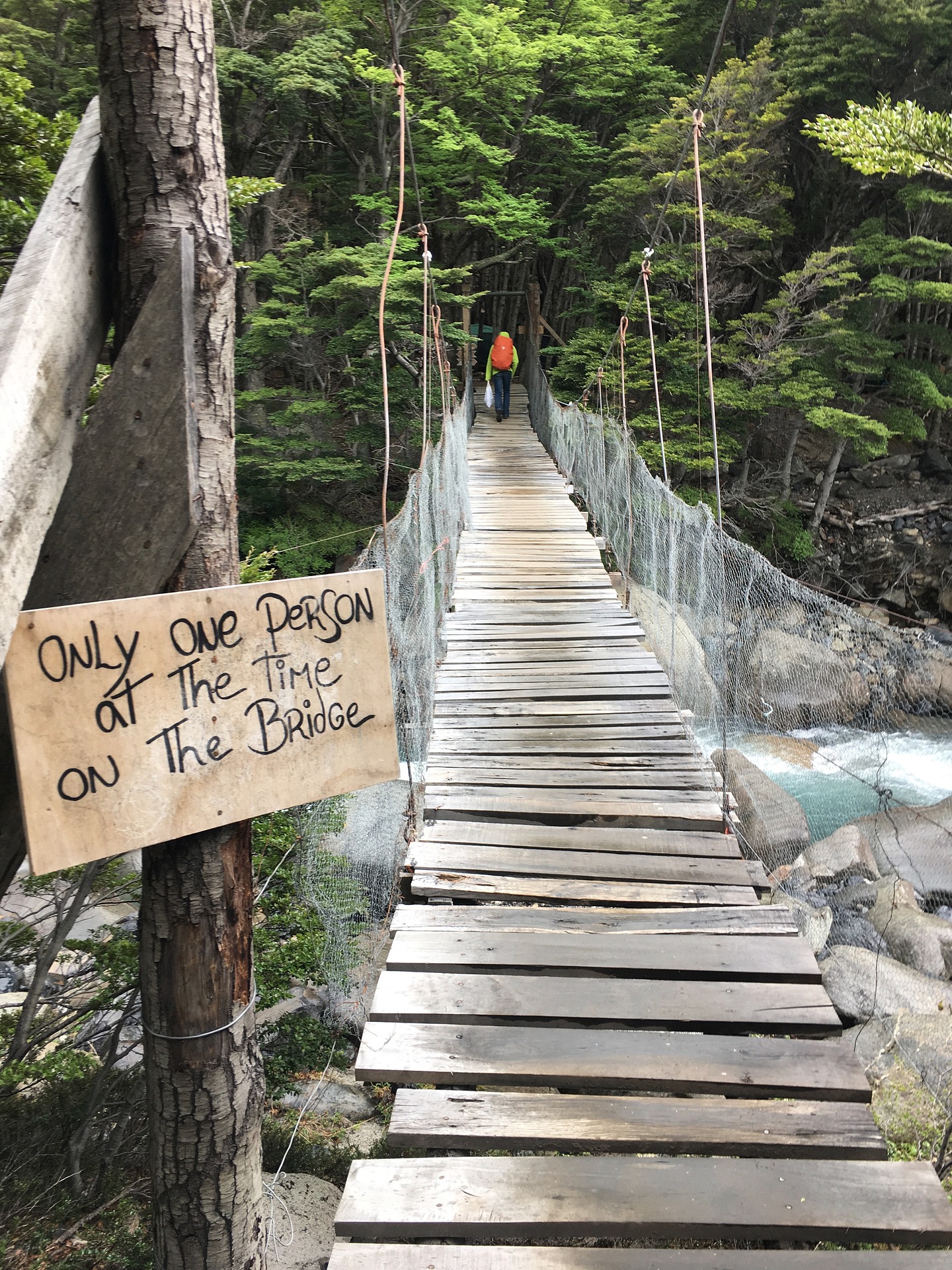
Best times to visit Torres del Paine
Because of its location in the Patagonian province of Chile, the Torres del Paine’s weather will change from dawn ’till dusk, sun to rain to snow…to well, unpredictable. One thing you can definitely notice year-round is the wind, so be prepared to prepare if arriving on the edge of the ghost town feeling of a seasonal Patagonia winter. The most common time to visit the Park is from December to March; however, it also happens to be the busiest. Many people choose to visit in April and May when the leaves turn to colors and give ample opportunity for some stunning images.
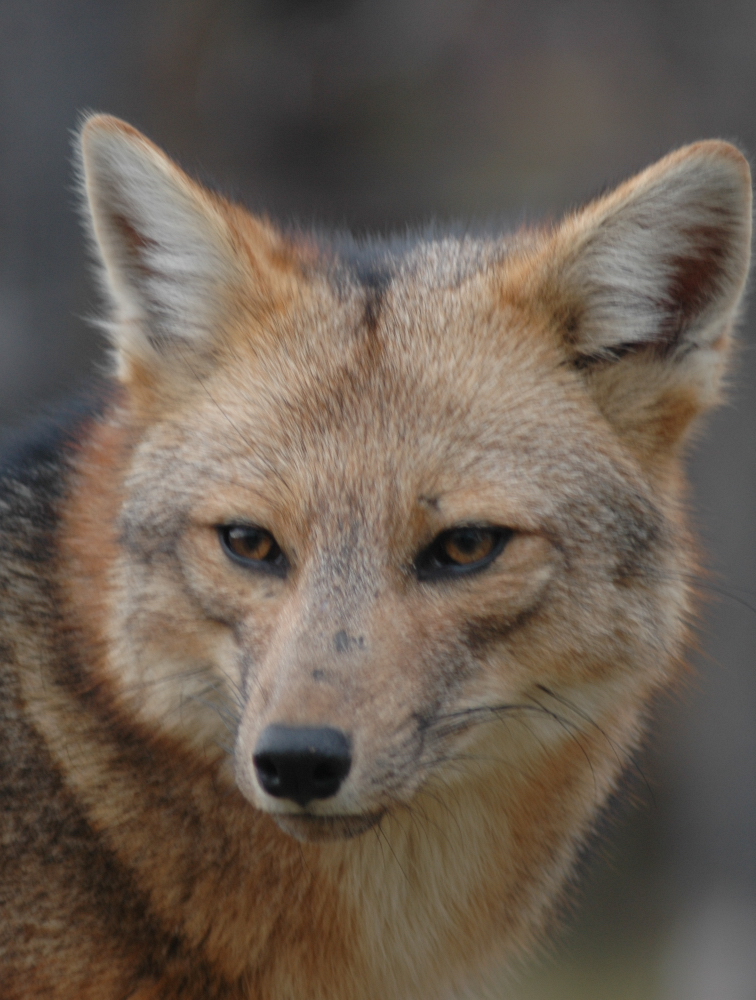
practical information
HOW TO GET THERE
The best way to go from Santiago to Punta Arenas is by domestic air. Santiago’s flights run direct to Punta Arenas or with a stopover at Puerto Montt. If traveling into Chilean Patagonia from Argentina, with the possibility of a stopover visit at El Calafate, there’s a five-hour bus ride to the Puerto Natales border where you cross into Chilean Patagonia.
GETTING AROUND
The best way of getting around in Patagonia is with a rental car. This gives freedom of exploring the Torres del Paine National Park, is the most cost-efficient way and if you also want to do some day hikes, this will give the freedom to do that. Alternatively, we recommend exploring the park with an organized excursion, that visits all the highlights of the park and allows for some time to enjoy.
There are regular busses between Puerto Natales and the entrance of the national Park, to Calafate and to Punta Arenas.
WHERE TO STAY
You will find most accommodation in Puerto Natales. There is not a big selection of hotel, but good 4-star hotels as well as more budget options can be found. The most expensive lodges are located within the National Park of Torres del Paine. These are usually in high demand, so booking far in advance is recommendable.
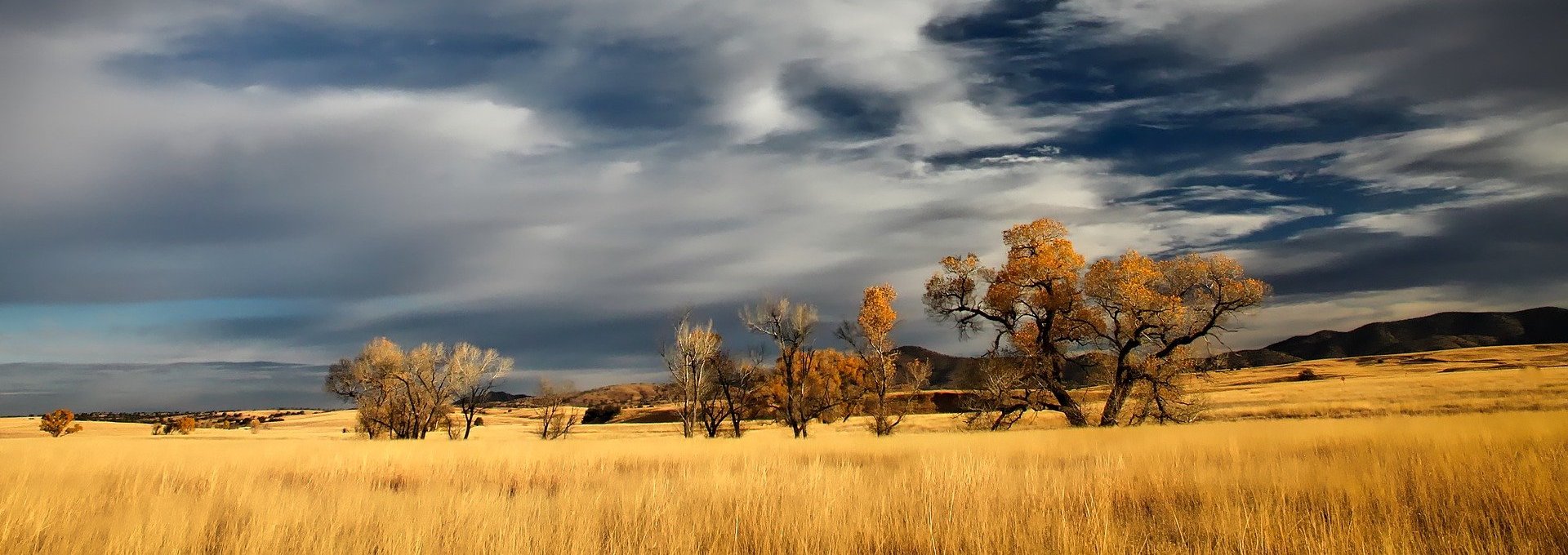
More highlights of Chile
With eight local offices in Latin America, we have the perfect base to help you build the perfect trip for your clients. Unrivaled experience with a wide selection of bed & breakfasts, small posadas, unique boutique hotels and world class luxurious lodging.

